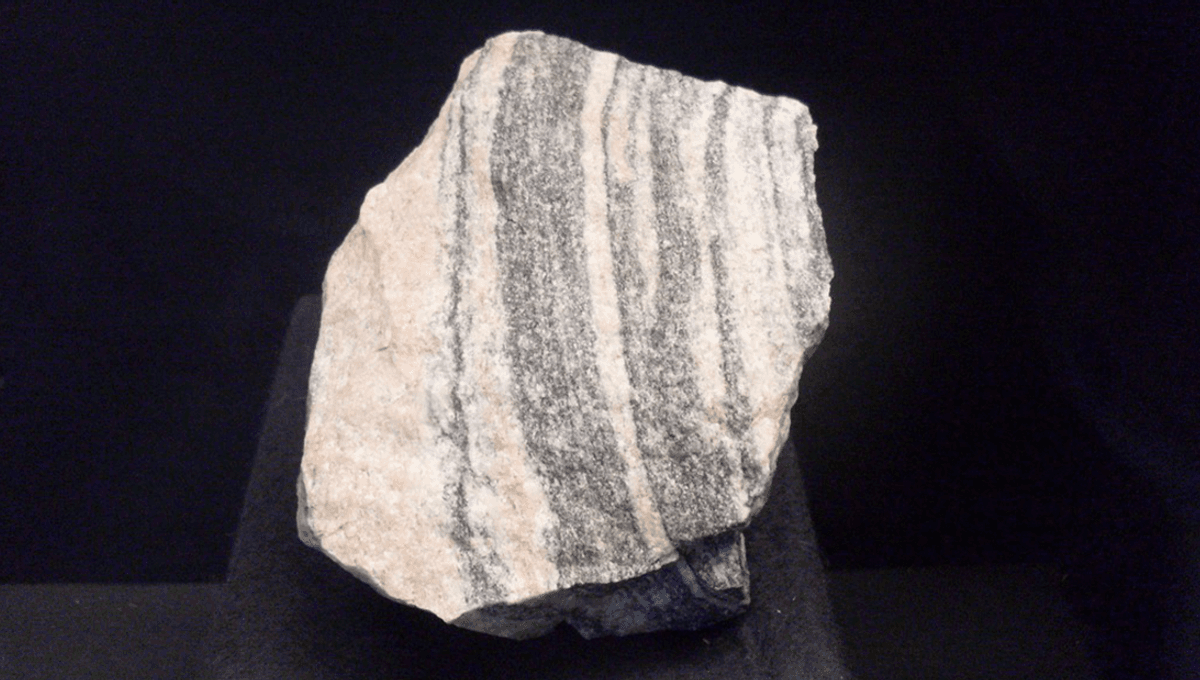
It is time to journey back through Earth’s geological history. Wind back the clock around 4 billion years and take a look at some of the oldest rocks that can still be found on Earth today, and even what we might learn from looking inside them.
We know relatively little about the earliest parts of Earth’s history since its formation 4.54 billion years ago. What we do understand is that the oceans were created, and the first dry land began to form the continents. During this period, materials from space also crashed into Earth, such as meteorites, and even, potentially, another planet. To learn more about what happened, scientists have to take clues left by these events, in the form of billions-of-years-old rocks.
One such place to find these rocks is the Acasta Gneiss Complex in northern Canada. The rock type is known as gneiss and might be as old as 4 billion years. These rocks would have been pushed up from inside the Earth’s crust.
Ancient rocks either form from fine particles that were pressed into layers of sedimentary rock at the bottom of the ocean, or are formed from molten magma that rose from Earth’s mantle.
What gives scientists clues about the formation of ancient rocks is what’s inside. Tiny crystals called zircons can be formed in cooling magma. These zircons are incredibly small, less than the width of a human hair, and robust, and can even trap radioactive elements like uranium. They are resistant to things like chemicals and can even survive geological events. The center of a zircon is a tiny snapshot of the chemical characteristics of the rock it formed in.
“If I have a metamorphic rock, I can use the types of minerals and their chemistry to determine the conditions that the rock had experienced at some point in its history. For example, a temperature of 700°C [1,292°F] and high pressure of several thousand times atmospheric pressure imply that it had been deep in the crust at some time during its geologic history,” explains Professor Darrell Henry to the American Museum of Natural History.
Zircon’s element-trapping properties lead to a big discovery in the Nuvvuagittuq rocks from Hudson Bay in Canada. While most were dated to 3.2 billion years, a small sample contained neodymium 142, which is formed from the breakdown of samarium 146. There is no samarium left on Earth, so these crystals must have formed when it was present. By comparing the amounts, researchers realized they had potentially discovered the oldest rocks on Earth at 4.28 billion years.
However, the discovery was controversial, with some trying to find other rocks from the same area with similarly old zircon. One opposing view argues they are 3.8 billion-year-old rocks.
Meanwhile, rocks in Jack Hills Australia were found to be 4.39 billion years old in 2014. “This confirms our view of how the Earth cooled and became habitable. This may also help us understand how other habitable planets would form,” Professor John Valley, a geochemist at the University of Wisconsin-Madison, said in a statement in 2014.
The Guinness World Record for the oldest Earth rock is currently held by the Nuvvuagittuq greenstone belt, which is listed as 4.28 billion years old, while the oldest igneous rock on Earth is Erg Chech 002, a 4.565-billion-year-old meteorite that was found in Algeria in 2020 and is even older than Earth.
Source Link: Where Are The Oldest Rocks In The World, And What's Inside Them?